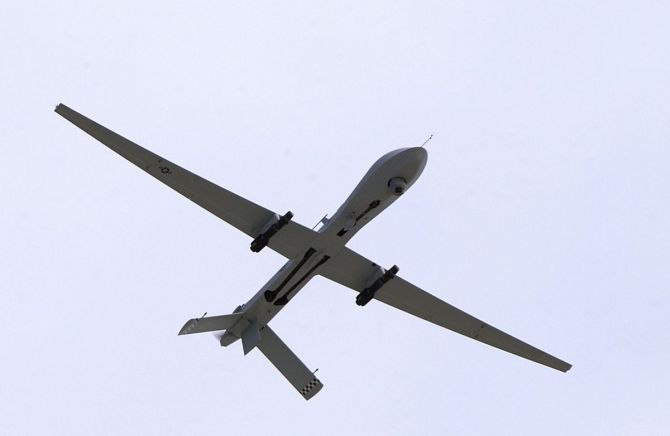The US drone strike that killed Al Qaeda chief Ayman al-Zawahiri on the balcony of a safe house in downtown Kabul points to the use of secret Hellfire missiles by the CIA as there was no explosion and, according to American President Joe Biden, ”no civilian casualties” either.

Zawahiri, 71, who assumed the leadership of Al Qaeda after the death of Osama bin Laden, was reportedly killed by two Hellfire missiles fired into the balcony of the safe house in Kabul at 6.18 am local time.
”This mission was carefully planned and rigorously minimised the risk of harm to other civilians. And one week ago, after being advised that the conditions were optimal, I gave the final approval to go get him, and the mission was a success. None of his family members were hurt, and there were no civilian casualties,” President Biden said on Monday while announcing the death of Zawahiri from the White House.
Widely-known Hellfire missiles are specially designed, secret missiles used to conduct pinpoint airstrikes that kill terrorist leaders with no explosion, drastically reducing damage and minimising the chances of civilian casualties.
A Hellfire missile, which is a little more than five feet long and weighs just over 100 pounds (over 45 kg), typically leaves behind mangled, burned-out shells of vehicles, surrounded by debris and scorch marks over a large radius.
The warhead-less missile is designed to plunge more than 100 pounds of metal through the tops of cars and buildings to kill its target without harming individuals and property close by.
According to a 2019 report in The Wall Street Journal, both the Central Intelligence Agency and the Pentagon have used the weapon while closely guarding its existence.
The Hellfire missiles have several variants, depending on their warhead, guidance system, and physical variations. Hellfire R9X, which uses pop-out sword blades to kill targets with minimal collateral damage, is the latest and peculiar addition to the line of Hellfire missiles.
The R9X is known colloquially to the small community of individuals who are familiar with its use as ”the flying Ginsu”, for the blades that can cut through buildings or car roofs and kill the target. The nickname is a reference to the popular knives sold on TV infomercials in the late 1970s and early 1980s that showed them cutting through both tree branches and tomatoes. The weapon has also been referred to as the Ninja bomb, the report said.
The missile was born of an emphasis, under former president Barack Obama, on avoiding civilian deaths in a long US campaign of airstrikes in Afghanistan, Pakistan, Iraq, Syria, Somalia, Yemen and other locales. Aside from humanitarian and legal considerations, civilian casualties can undermine popular and allied support for US strategic goals.
The weapon was under development as early as 2011. A missile with similar capabilities was considered as a ’Plan B’ to kill Al Qaeda leader bin Laden in his compound in Abbottabad, Pakistan, that year, the report said, citing several officials.
The weapon is used infrequently, employed only in specific circumstances, particularly when a senior terrorist leader has been pinpointed but other weapons would risk killing innocent bystanders. But when a lone individual is targeted, the R9X is a sought-after weapon.
In January 2019, Jamal al-Badawi, accused of being behind the bombing of the USS Cole in 2000 in a Yemeni port, killing 17 American sailors, was killed by an R9X fired by the US military. The Pentagon has acknowledged the strike, which occurred in Yemen, though not the specific munition involved.
In February 2017, Ahmad Hasan Abu Khayr al-Masri, an Egyptian national who served as Al Qaeda's No. 2, was killed in Syria's Idlib Province by an R9X fired by a US aircraft operated by the CIA. The CIA doesn't acknowledge airstrikes it carries out.
Because of the secrecy surrounding the weapon, it is hard to learn certain details about it, including its precise development timeline. The CIA, Pentagon and Hellfire missile maker Lockheed Martin Corp. refuse to comment on it.
Hellfire's capabilities have increased over time, allowing it to take on a wider range of targets, as well as countermeasures and obscurants, thereby improving overall mission performance. In the early 1990s, the US Army developed the AGM-114F to counter improved tank defences.










